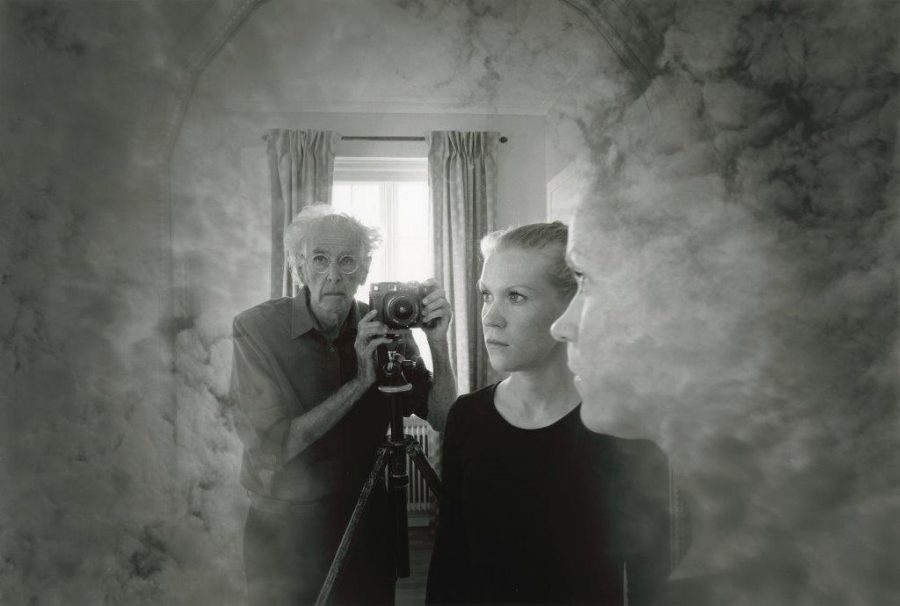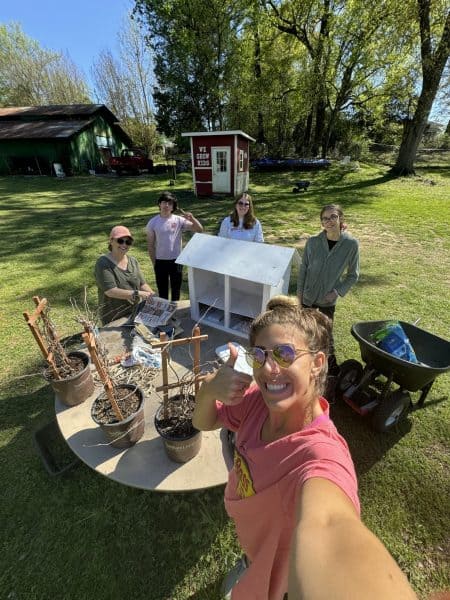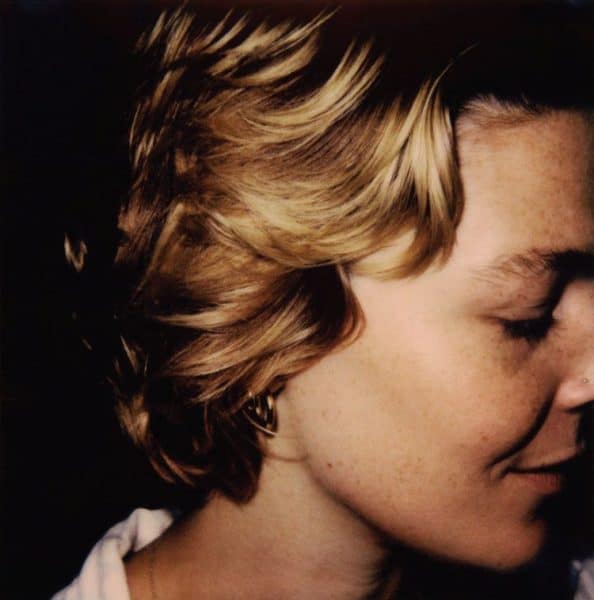Photomontage innovator’s newest pieces visit UA
Sarah Moody Gallery features the latest works of legendary photographer Jerry Uelsmann
March 25, 2019
Upon entering the gallery, it is obvious the stark white walls are not broken by rectangular splashes of color. Nor are they filled by massive pieces in impressive frames. Instead, the black-and-white photomontages of Jerry Uelsmann beckon the viewer into his surreal world.
“Confluence,” the first new body of work by Uelsmann in several years, is on display in the Sarah Moody Gallery of Art. Influenced by memory, aging and self-reflection, Uelsmann’s pieces continue to awe viewers with his photorealistic surrealism.
“I think [Uelsmann] is looking for what he’s titled his show,” Vicki Rial, Sarah Moody Gallery exhibitions coordinator, said. “He’s looking for things to come together. He’s looking for confluence in his images and in his life, literally and symbolically.”
But Uelsmann does not use Adobe Photoshop or any other web design software to bring his images together. He began creating his distinctive works in 1967, before the first portable digital camera had been invented. Today, as he did then, Uelsmann crafts his dreamscapes in the darkroom.
“The technical aspect of his work shows a lot of finesse and attention to detail,” Jonathan Cumberland, assistant professor of art, said. “[Uelsmann] uses his skills in the darkroom to play with our ideas of reality.”
Largely out of use in the digital age, darkrooms used to be the only way for photographers to develop their images. However, many college art departments and professionals have darkrooms for work in film photography.
The rooms are kept dark to preserve the blue-and-green light-sensitive film and paper, lit only by red or amber colored lamps. To develop a picture, photographic paper is placed under enlargers containing a photo negative, which comes from the camera’s film. Functioning somewhat like a slide projector, a light shines through the enlarger, burning the image onto the paper. This image remained invisible until the photographic paper was placed in a chemical bath.
Uelsmann pioneered the technique of using multiple enlargers, each containing different negatives, to combine several images into an illusion of a seamless photograph. As he is unable to see the completed photo until the chemical bath, the process is one of trial and error. Each attempt requires a full repeat of the enlargers each time to avoid a double exposure.
“Jerry Uelsmann is the grandfather of photo manipulation,” Assistant Professor of Art Allison Grant said. “He used metaphors. He surprised his audiences by showing them that photography could do things they hadn’t thought possible.”
Grant said many of her students were surprised that Uelsmann’s photomontage works were even possible before digital editing. His use of surrealism was used to explore themes of human psychology and different ideas of reality, she said.
“When I was in school, I hadn’t realized that you could do surrealism like this in a darkroom,” Cumberland said. “When you get a chance to look more closely, you can read into the symbolism and find the metaphors… [This show] is revisiting memories, new ones and snippets of old memories. That’s the whole idea of ‘Confluence,’ at least from my perspective.”
In an age of digital photography and Adobe Photoshop, an upstart student might claim to be able to replicate Uelsmann’s works in a computer lab rather than a darkroom. But Cumberland says the artist’s techniques, as well as his messages, make the pieces special.
“Adobe actually went to Uelsmann and asked for his help, because they were inspired what he had been doing and they wanted to create a digital version,” Cumberland said. “Photoshop took things like the dodge and burn tool from Uelsmann’s techniques in the darkroom.”
Armed with a knowledge of film photography and the use of darkrooms, visitors can better appreciate the once groundbreaking works of Jerry Uelsmann as he continues to produce his art in the digital age.
“This is a show where if you don’t appreciate how it’s made, you could quickly gloss over it,” Cumberland said. “But if you look closer and really think about what’s going on from a technical standpoint, seeing the seamless blends in the montage, you gain an appreciation for the work.”
“Confluence,” by Jerry Uelsmann, will be on display in the Sarah Moody Gallery of Art until May 3 through an arrangement with the University of Florida.











